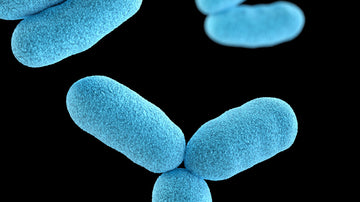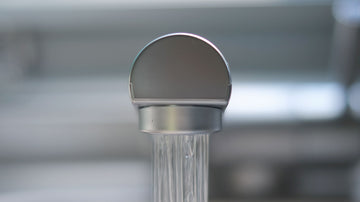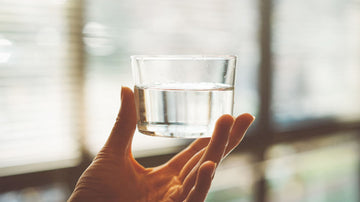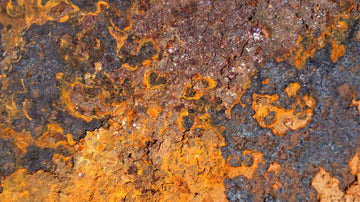
How do bacteria get into our drinking water?
Bacteria are a normal part of our drinking water. After all, our drinking water does not consist of pure H2O. In addition to trace elements, minerals and salts, there are also many different bacteria in drinking water; more precisely up to 100,000 per milliliter! Incidentally, in the mineral water from the supermarket it can even be ten to a hundred times more. This is because bottles of mineral water are often left at room temperature for a long time before or during consumption. The bacteria contained in it can multiply rapidly. So that's quite a lot of bacteria and that wouldn't be a bad thing in principle. Bacteria are an important part of our body. Their absorption and their presence are important for the composition of our intestinal flora.
Unfortunately, there are also undesirable bacteria that are harmful to us and can lead to diseases. One speaks of so-called human pathogenic bacteria. These include, for example, intestinal bacteria (E. coli or enterococci). If we take in too much of these bacteria through drinking water or through contaminated food, we experience discomfort, diarrhea and nausea up to and including vomiting. Most of us have experienced something like this, especially when travelling. Certain strains of enterococci (particularly E. faecalis-strains) can cause severe infections in immunocompromised individuals.(Image: Rocky Mountain Laboratories, NIAID, NIH).

In principle, human pathogenic bacteria should not be in our drinking water at all. The authorities have defined strict limit values in this regard, which are also checked at regular intervals. Nevertheless, one hears again and again that the drinking water in a community has to be boiled because the authorities have detected bacterial contamination. How can it come to that? Most of the time, heavy rainfall is the reason for the bacterial contamination of our tap water. Especially in the period from spring to autumn, fields in agriculture are regularly fertilized. The fertilizer contains the harmful e-coli bacteria. When it rains heavily and persistently, a lot of fertilizer is washed from the meadows into the streams, rivers and lakes. It can happen that the waste water treatment plants in such a phase overflow from the large mass of water and can no longer fulfill their normal cleaning effect. You can often see brown-colored rivers below sewage treatment plants. (Image: AWEL)

When harmful and disease-causing bacteria get into the cycle and eventually end up in our drinking water, patience is the only thing that can help. In fact, when the weather calms down again, the dilution automatically leads to a gradual decrease in the bacterial concentration. This also corresponds to the procedure followed by the authorities if they detect contamination with harmful germs at a waterworks or water intake. The affected plant is then usually taken offline for a few days. In some cases, this process is also accelerated chemically (e.g. with emergency chlorination). The problem then resolves itself over time. This is of course annoying for those affected, because they have to boil their tap water during this time.
Should we filter bacteria from drinking water?
As mentioned at the beginning, most of the bacteria contained in drinking water are not harmful to us. On the contrary, they are even useful for our eco-household. It therefore makes no sense to completely clean the water of bacteria (so-called sterile filtration). Unless you suffer from an acute immune deficiency. Nevertheless, one would like to know that the harmful - human pathogenic - bacteria are banned from the tap water just in case. A scientific fact can be used here. Pathogenic bacteria (e-coli, enterococci) are significantly larger than their harmless comrades. With a cleverly selected pore size of the filter, you can ensure that harmful bacteria are retained and the useful ones remain. DrinkPure relies on a specially manufactured and patented membrane. This has been shown to retain more than 99.99% of e-Coli bacteria while allowing smaller bacteria to pass through. You can find the independent ones here Bacterial retention test reports.
DrinkPure also filters other substances out of the water. Here you can find an overview of what DrinkPure can filter.




